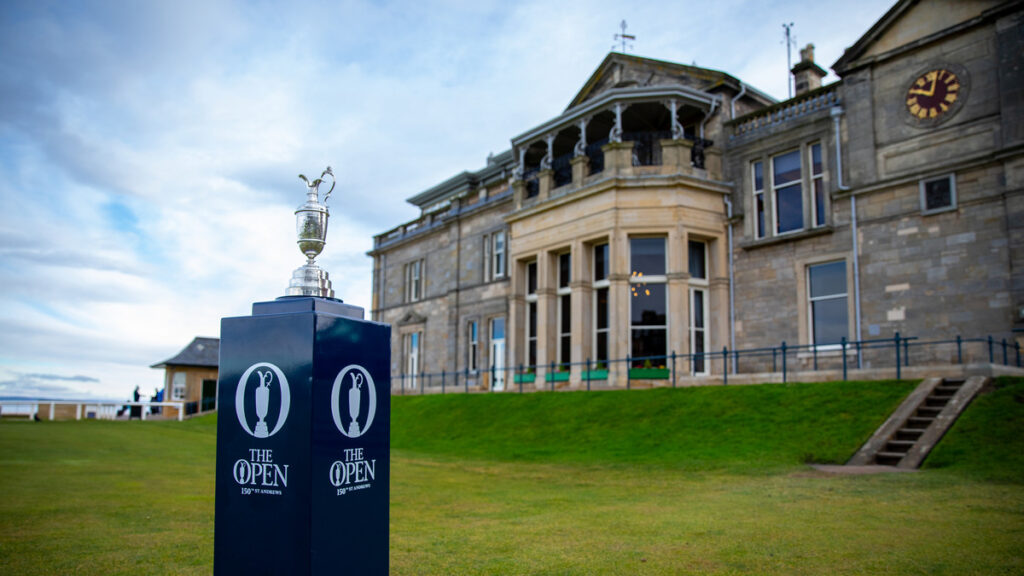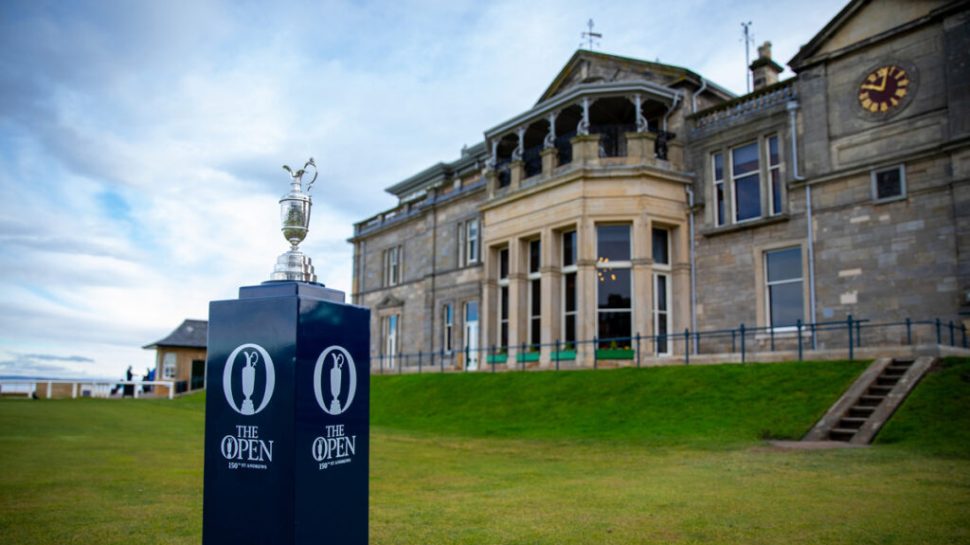
Estimated reading time: 18 minutes
ST. ANDREWS, SCOTLAND. It is only fitting the 150th Open Championship will be played this week at the iconic Old Course at St. Andrews. This marks the 30th time golf’s oldest major championship will be contested there. The last time the battle for the Claret Jug took place here was in 2015 when Zach Johnson held off a slew of competitors to be crowned “Champion golfer of the year.”
The 2022 event will feature various interesting storylines. The ongoing tussle between the PGA Tour and the growing involvement of the new LIV Tour has been front and center and remains so.
But the heart of The Open rests on the venue and no other course on the rota carries the majesty in such a profound manner as the Old Course and its inexorable link to the host community of St. Andrews.
Golf lies at the core of the community and the opening and closing holes provide the ultimate setting. The opener has been ground zero for every key golf champion — save for Ben Hogan — since golf competitions were contested here.
The Old Course is integrally connected to the vagaries of Scottish weather. Amazingly, Rory McIlroy shot 63 in the 1st round in the 2010 event. The next day his score ballooned to 80 — the largest differential between two successive rounds in the history of The Open at St. Andrews.
In the post-World War II time frame the game’s two greatest players — Jack Nicklaus and Tiger Woods — each won two Opens at the Old Course. In all, St. Andrews’ 12 post-war champions hold a remarkable 67 major titles between them.
Overall yardage for The Opens played on the Old Course held rather steady until the most recent of times. For the ’22 event the yardage will be 7,313 — an increase of 16 yards from the 2015 event. Par remains 72.
Scorecards of the Course 2015 and 2022
| 2015 | ||
| Hole | Par | Yards |
| 1 | 4 | 375 |
| 2 | 4 | 452 |
| 3 | 4 | 398 |
| 4 | 4 | 480 |
| 5 | 5 | 570 |
| 6 | 4 | 414 |
| 7 | 4 | 371 |
| 8 | 3 | 174 |
| 9 | 4 | 352 |
Out 36 3586
| 2022 | |||
| Hole | Par | Yards | +/- |
| 1 | 4 | 375 | 0 |
| 2 | 4 | 452 | 0 |
| 3 | 4 | 398 | 0 |
| 4 | 4 | 480 | 0 |
| 5 | 5 | 570 | 0 |
| 6 | 4 | 414 | 0 |
| 7 | 4 | 371 | 0 |
| 8 | 3 | 187 | +13 |
| 9 | 4 | 352 | 0 |
Out 36 3599 +13
| 2015 | ||
| Hole | Par | Yards |
| 10 | 4 | 386 |
| 11 | 3 | 174 |
| 12 | 4 | 348 |
| 13 | 4 | 465 |
| 14 | 5 | 614 |
| 15 | 4 | 455 |
| 16 | 4 | 418 |
| 17 | 4 | 495 |
| 18 | 4 | 356 |
In 36 3711
Total 72 7297
| 2022 | |||
| Hole | Par | Yards | +/- |
| 10 | 4 | 386 | 0 |
| 11 | 3 | 174 | 0 |
| 12 | 4 | 351 | +3 |
| 13 | 4 | 465 | 0 |
| 14 | 5 | 614 | 0 |
| 15 | 4 | 455 | 0 |
| 16 | 4 | 418 | 0 |
| 17 | 4 | 495 | 0 |
| 18 | 4 | 356 | 0 |
In 36 3714 +3 yard
72 7313 +16 yards
The Old Course will once again bring to the forefront a unique design — one with seven double-greens. Amazingly, the layout can also be played in reverse order.
The most riveting hole once again will be the penultimate 17th – known forthrightly as “The Road Hole.” Playing just under 500 yards — the 17th for many years, was a par-5 but in recent times a demanding par-4. Approach shots are tested rigorously — a deep bunker — more akin to a devilish pit — fiercely guards the left side of the green. Players must decide the proper line of play to avoid it and the actual road that awaits behind the green. There is no other hole of its kind in the world.
Few holes strike fear in the hearts of the world’s elite players — the 17th certainly does that because so much can happen so quickly.
All players in the field are aware of its stout reputation and no lead is ever safe until the hole has been played successfully.
The final hole takes players back to the R&A clubhouse located just behind the green with the famous town just off to the right. The 18th features the “Valley of Sin” — a deep swale in front of the green that must be accounted for. Strong players can attempt to reach the green on the tee shot as Jack Nicklaus famously did in the 1970 championship in his successful playoff victory against fellow American Doug Sanders.
As well as being The Open’s most noted venue, St. Andrews frequently pulls in record crowds for The Open. The highest in the history of the event was set at the turn of the millennium. The 129th Open in 2000 had an attendance of 239,000 — breaking the record previously set by St. Andrews 10 years earlier. The Old Course has accounted for four of the seven highest attendances in the history of the event — and has set new attendance record six times since 1960.
This installment features seven global architects providing their assessments on a range of topics concerning the Old Course. One participant competed in past Opens including on the Old Course and another caddied and worked in the maintenance area before jumpstarting to an acclaimed design career.
This week’s event will feature the world’s best players but the shining star rests with the course — an old friend — no pun intended.
The ultimate linking pin between golf’s glorious past and present times.

What is the significance of an Open Championship at The Old Course — especially the 150th event?
JOHNSON: The connection between ‘the game’ and ‘the people’ is never more heightened than at St. Andrews.
DOAK: The Old Course is the most historic course in the game. Who wouldn’t want to win where Braid, Jones, Snead, Thomson, Nicklaus, Ballesteros, Faldo and Tiger Woods have won.
GRAUBALLE: Simply a celebration of the game and the history of the game. A fantastic testament to the sport – how many other sports can pride themselves with a legacy like The Open – started in 1860 and now the 150th event and being played on the same venues today as then.
LOBB: The Open Championship at The Old Course is the ultimate homage to championship golf. The Open Course and St Andrews as a town is the perfect venue for such a celebration of this championship.
STRAKA: I recently returned from Europe and while there, I could feel an extra special vibe and excitement around this years Open. Returning to the birthplace of golf always makes The Open Championship a little more special. Everyone who likes golf would love to experience it, see the sights and hear the sounds. It reminds me of the excitement that builds right before Masters week at Augusta.
URBINA: The significance of the Open Championship being contested at St. Andrews is a testament to a design that is not formulaic. This 400-year-old design allows for elasticity in its set up. Bunkers and greens that are not presented in a fashion to challenge only one type of player. When Mr. Robertson improved the course in the 1800s by combining the two different sets of greens into one large double green, allowing for shared fairways and bunkers. Something no other course in the world can boast of. There is only one Old Course, as it should be.
CLAYTON: For Australians it’s significant because Kel Nagle won the Centenary Open in 1960 so there is some correlation to the past – even though it wasn’t the 100th Open. Peter Thomson too in 1955. National pride aside, it’s significant because it’s the closest thing to a World Championship of Golf on arguably its best course.
Is the Old Course still relevant to the world’s best players given the advancements in club and ball technology and the sheer athleticism of the star players?
URBINA: The Old Course is still relevant to all levels of players, even the most athletic. There is a hazard for all levels of players, the sheer size of the greens will test your putting skills and some of the bunkers are crafted in such a way that exiting them is not a guarantee — as in life. In 1921 Bobby Jones once walked off the course after taking four strokes to exit a bunker. Ask Jack Nicklaus what it is like to get out of “Hell Bunker”.
DOAK: The Old Course is still relevant for great players. As Brooks Koepka told me, it’s the only course he plays where you have to re-adjust your strategy for each hole from day to day, or even once you’ve hit a tee shot off your intended line. The positioning of the deep bunkers guarding the hole locations plus the firmness of the ground reward the correct angle of approach.
CLAYTON: It’s another in a long line of great courses rendered obsolete by equipment if the measure of obsolescence is how Old Tom, C.B. Macdonald, Alister MacKenzie and Bobby Jones saw the course playing. What isn’t obsolete are the architectural principles which are as relevant now as they have been a century ago.
So much of it will depend on the wind. In 1990 – back when no one was talking about the effect of equipment — square grooves aside — Nick Faldo shot -18 because the weather was perfect. Five years later, John Daly was -1 in much more difficult conditions.
GRAUBALLE: Yes, I strongly believe that it is relevant. It may be the same course, but the players and fans will be perceiving the challenge differently today compared to the past, but this does not make it irrelevant. The scores will most likely be lower today than in the past, but it is still the player with the best score who wins.
JOHNSON: There is such complexity to the Old Course, and array of hazards through the green, that when they really tuck the pins away – behind a bulky shoulder, deep swale or deadly pot – the best players in the world are still rewarded for plotting their way around.
STRAKA: To be fair, there have been quite a few changes over the years, and many in the recent past, to try and combat the advancements you mention. For the longest players, there is really no length that will hinder them. St. Andrews’ defense is not in its length though but rather the myriad of strategic angles, firm and fast conditions and interesting pin locations. So yes, it is still very relevant.
LOBB: With no wind The Old Course is easy for today’s professionals. Well most courses are. The ball is obviously flying too far for these elite athletes and the Championship on The Old Course is a far different prospective to what it was a few decades ago.
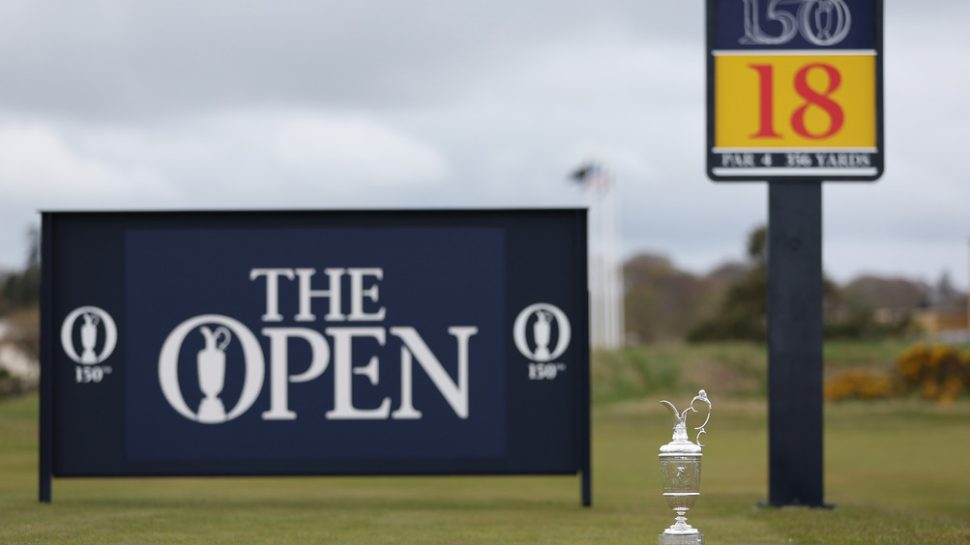
What do you think someone like Old Tom Morris would think of golf today and how The Open has evolved since his time?
DOAK: I think Old Tom Morris would be amazed — but pleased — at how big professional golf has become. But I also think he would lament some of the things that have been lost — the natural nature of courses, some of the old school golf shots he could play with the older equipment
URBINA: Old Tom Morris may chuckle at the way the game is played today. It didn’t matter what the final score was in the end. The total number of strokes did not matter, its whether you won or not, gamesmanship was the order of the day. Playing against your opponent and the course gave the skilled golfer two opponents not just one.
No need to worry about defending par at the Old Course, something the game needs to rethink. Too much money is being spent on courses today defending par. In 1873 Tom Kidd shot a two-day total of 179, who cares what the final tally was, go play and let the best golfer win.
STRAKA: He’d probably be amazed at the quality of the green keeping. He may or may not have approved of the levels which we maintain grass, but I think he’d be amazed. I think what’s cool about The Open is that it is the most authentic or closest to how the game was originally played for centuries than any other major tournament.
LOBB: I think Old Tom would be pretty pleased and amazed at the event as it is now the premier test for professional golf. Given the fact that it is played on a course available for all to play and enjoy this is pretty remarkable.
CLAYTON: I think he’d be amazed at the number of Australians, and others, travelling — presumably the airplane would be something of a shock to him — across the world to watch the championship and to play the best of the surrounding courses. I also suspect he’d be lined up with Alister Mackenzie pleading with the R&A Secretary for a ball rollback.
JOHNSON: Old Tom would be surprised to see the standing — and size — of the professional game, versus the early superiority of the amateur game. Greenkeeping has certainly evolved since his time as keeper of the Links, so that the game is far less “sporting.”
GRAUBALLE: I’m sure that there would be a recognition of the player’s abilities, but at the same time a disappointment in he way distance has become the overall name of the game. He would be delighted to see how The Open has developed to not only find The Champion Golfer, but also to spread and grow the game of golf.
What enduring lessons does The Old Course provide for architects today?
LOBB: The Old Course provides us with examples of ground contours as hazards and that we all need to be brave in our design work.
URBINA: One enduring lesson I learned is the way it is presented to the participant. Golf with blind shots, greens not visible from many parts of the fairway, fairways not visible from the teeing grounds, no discernable landmarks, no fairway mowing lines no tree lined fairways, no dominate thick rough to outline the fairways that guide your way.
Sometimes no flag sticks that you can see in the distance, obstacles in your way around every corner, buildings you hit over. It is the Old Course, golf without boundaries, challenging the best golfers finding the best route. As the famous British writer Bernard Darwin once said, “Golf, the spirit of adventure”.
GRAUBALLE: That variation and strategy is the foundation of great golf, that sometimes less is more and that small undulations can provide just as much or more fun and drama as big mounds.
DOAK: The number one lesson is that a course created almost at random has more strategic interest than anything built by any man alive. Architects think too much about an ideal way to play the hole; The Old Course offers several different ways to play, and makes the individual golfer sort out which is best for his own game.
JOHNSON: The Old Course is both infinitely complex and carefree. There is a necessary freedom to plot your way to the pin, and a sliding grey scale of consequence to every shot brought by the randomness of hazards and topography. The large greens are typically quiet in the interior, but interrupted by folds, depressions and pots at the periphery. So, the most playable golf course can, at the change of the cups, become 4,5,6 shots more difficult for the best players in the world.
CLAYTON: Out of bounds can be used as a great hazard. Bunkers should be both in the fairways – often the middle of the fairway – and not surrounded by long grass. Big greens, well done work. And, it’s the best example of a course making the shot to a green from one part of the fairway wildly different from the shot from the opposite side of the hole – or from an adjoining fairway.
STRAKA: Length is not a pre-requisite to make a good golf course, or even one that is challenging. Strategic angles die in many a tournament nowadays, but not so at St. Andrews. A course does not need to be all eye candy to be good either. Sometimes less is more.
Part 2
***
The Participants
Caspar Grauballe
Principal / Golf Course Architecture by Caspar
Rungsted Kyst, Denmark
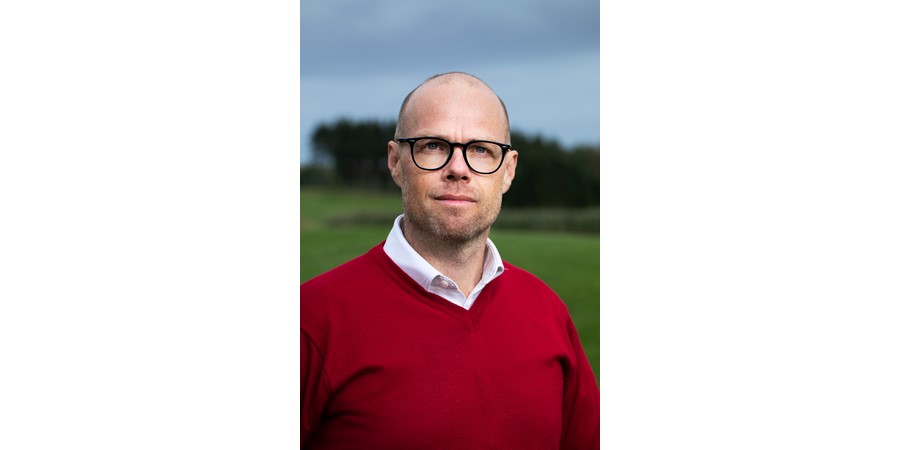
Started his career with Hawtree Ltd working primarily on existing links courses like Lahinch and Ballybunion. Lead architect on Trump Scotland in Aberdeen. His own company started in 2012 and has recently opened a new course in Poland — Black Water Links and is busy in France and Scandinavia with upgrades of several existing courses.
Caspar is serving as Vice President of the European Institute of Golf Course Architects.
Mike Clayton
CDP
London, United Kingdom

After a very successful amateur career which included victory in the 1978 Australian Amateur and the 1977 and 1981 Victorian Amateurs, Mike Clayton turned professional in 1981 and played on the Australasian Tour from 1981-2004 winning seven times. He was also a regular participant on the European Tour from 1982 to 1996.
Having studied golf architecture whilst travelling the world as a touring pro, he formed Michael Clayton Golf Design in 1995 in partnership with John Sloan and the late Bruce Grant. In 2010, that business morphed into Ogilvy Clayton, which later became OCCM In 2019 — he founded CDP with architects Mike DeVries and Frank Pont.
Tim Lobb
Golf Course Architect – Lobb & Partners
President – EIGCA
Woking, United Kingdom

Australian born and UK resident for past 24 years, EIGCA President Tim Lobb comes with a vast experience of designing both new build projects and a collection of a diverse mix of renovation and restoration projects in the UK and beyond. Of particular interest to Tim is designing courses that sit softly and harmoniously in their individual environments. No two projects are the same.
Tim has designed in more than 25 countries, on more than 50 projects and has 26 years of overall experience. He is the Founder and Principal of Lobb + Partners, based in Woking Surrey, UK with an additional office in British Columbia, Canada.
Clyde Johnson
Principal, Cunnin Golf Design
St. Andrews, Scotland
The ideal golf course architect must ‘have the soul of an artist, the brain of an engineer and the heart of a golfer’ – American golf writer Herbert Warren Wind’s infamous quote in the back of my mind, I headed off to the University of Sheffield to read Structural Engineering and Architecture. Promoting collaboration between creative and technical disciplines, this study introduced the daily challenges that face a field-based golf course architect whom tries to balance the call for inventive play and aesthetic interest with environmental and economical sensibility.
Since establishing Cunnin’ Golf Design in 2015, I have continued to assist Tom Doak and Renaissance Golf Design on select projects while building a client-base of architecturally significant courses. I look forward to working with clubs and clients that love the game of golf and its playing fields as much as I do.
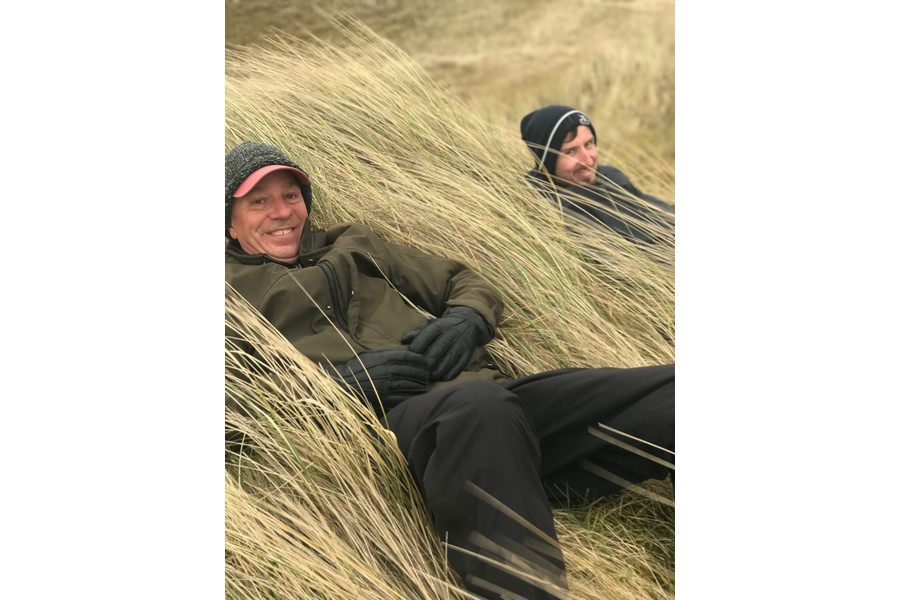
Tom Doak
Renaissance Design
Traverse City, Michigan
Thanks to a scholarship from Cornell University, Doak got to live on the links — caddying at St. Andrews the summer after his graduation, then spending the next seven months playing and studying every golf course of note.
In that year abroad, he discovered a challenging, natural outdoor sport played by all ages, on exciting courses which had cost nothing to build and which were affordable for all to play. Ever since, he has felt a responsibility to build courses reflecting the ideals of the game as the Scots still play it. His ideas on golf course design are shaped by having seen nearly every great course in the world — more than 1,000 in all.
Doak’s first solo design opportunity came at the age of 26, and he has not looked back. Major fan of both Alister MacKenzie and Pete Dye. Today, his design commissions have given him the chance to lead by example — excited in getting the opportunity to show what he has learned.
Jim Urbina
Principal, Jim Urbina Golf Design
Littleton, Colorado
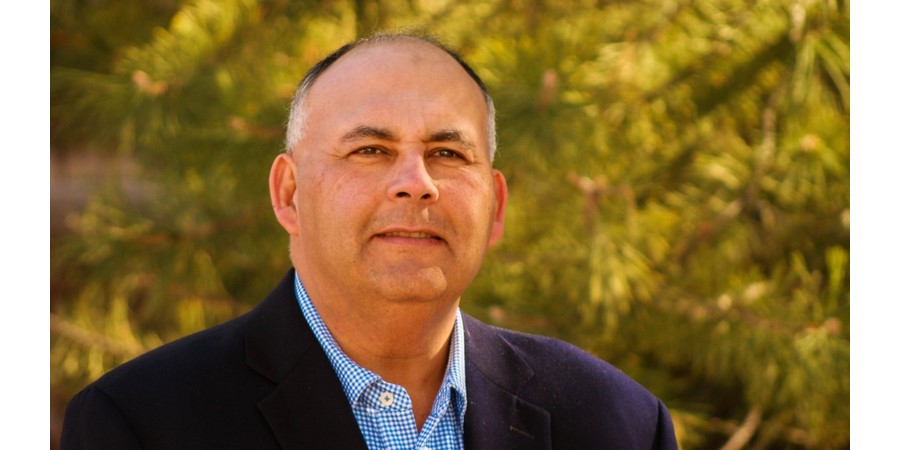
Began his career working for the iconic golf course designer Pete Dye. Went on to work for Pete and his son Perry on many golf courses in the U. S. and the Asian Rim. It was his association with the Dye family that allowed him to experience the beauty and charm of the links lands of Scotland and Ireland. The Dyes sent Jim to study what the links of the U.K. had to offer back in the middle 80s when traveling to places like St. Andrews and Prestwick were not that fashionable.
He went on to design and build many highly regarded modern courses and has restored many of the top 100 golf courses in the U.S. including the works of Alister Mackenzie, C.B Macdonald, Seth Raynor, Donald Ross, A.W. Tillinghast and many other Golden Age designs. In 2022 working on restoring the only Mackenzie designed course in Canada as well as several other Raynor and Ross courses.
In 2023 he will be working on restoring P.B. and Pete Dye’s Loblolly Golf Club as well as restoring Pasatiempo where he has spent over 20 years protecting the sanctity of Alister Mackenzie’s design in Santa Cruz, California. He has several New and Golden Age designs restorations projects on the drawing board.
Jason Straka
ASGCA
Fry/Straka Global Golf Course Design
Naples, Florida
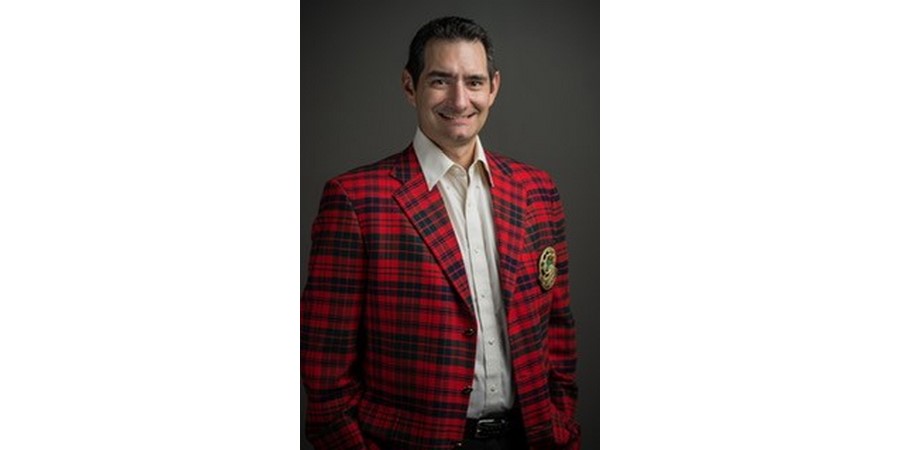
Jason is business partners with Dana Fry and together they operate a worldwide golf design business. Jason is the current President of the American Society of Golf Course Architects (ASGCA). Recent projects of Fry/Straka include Union League National Golf Club, Belleair Country Club, and the Desert Course at Cabo Del Sol.
